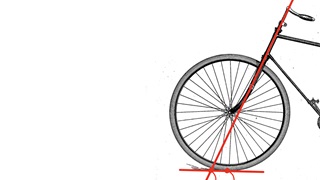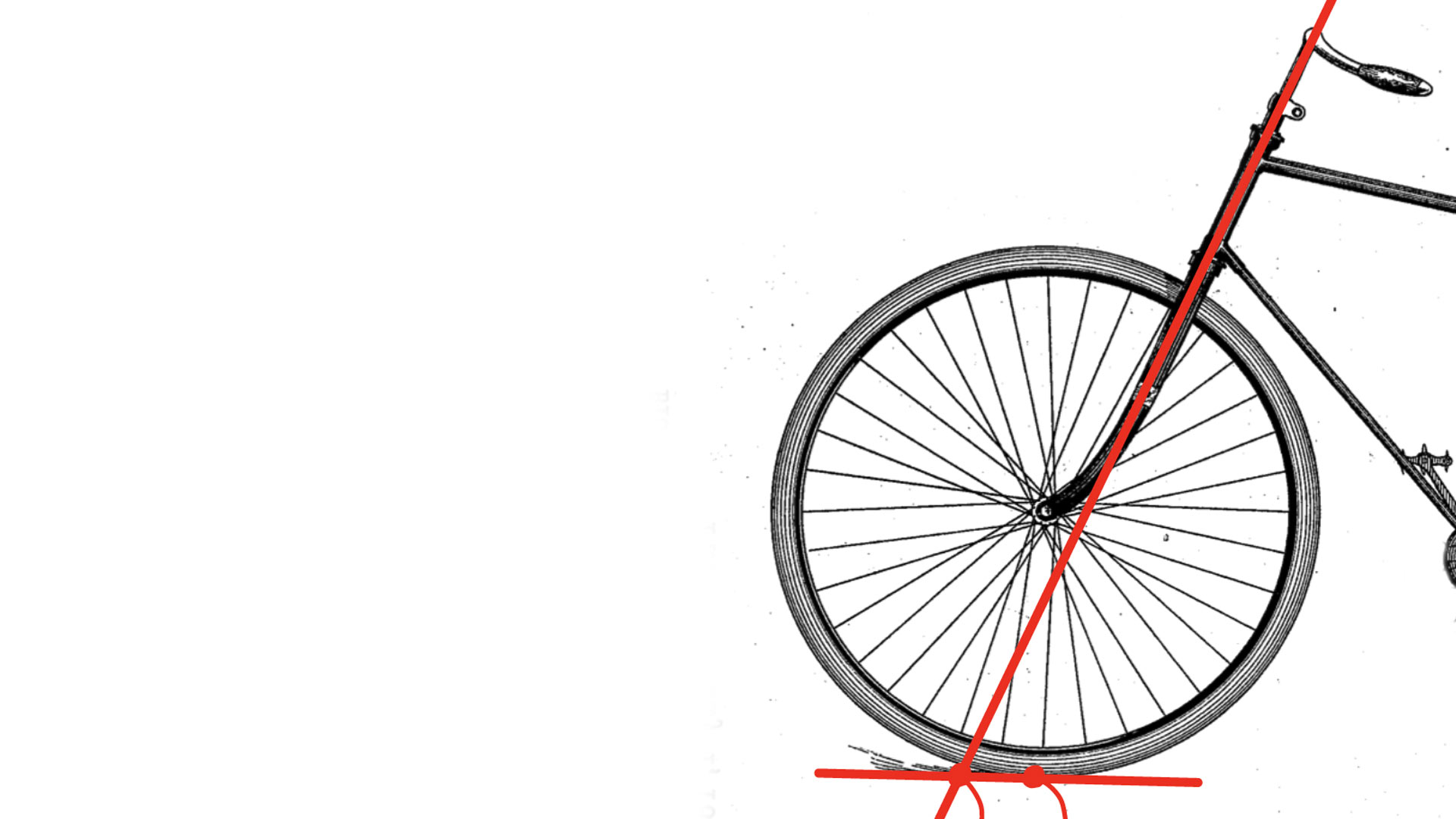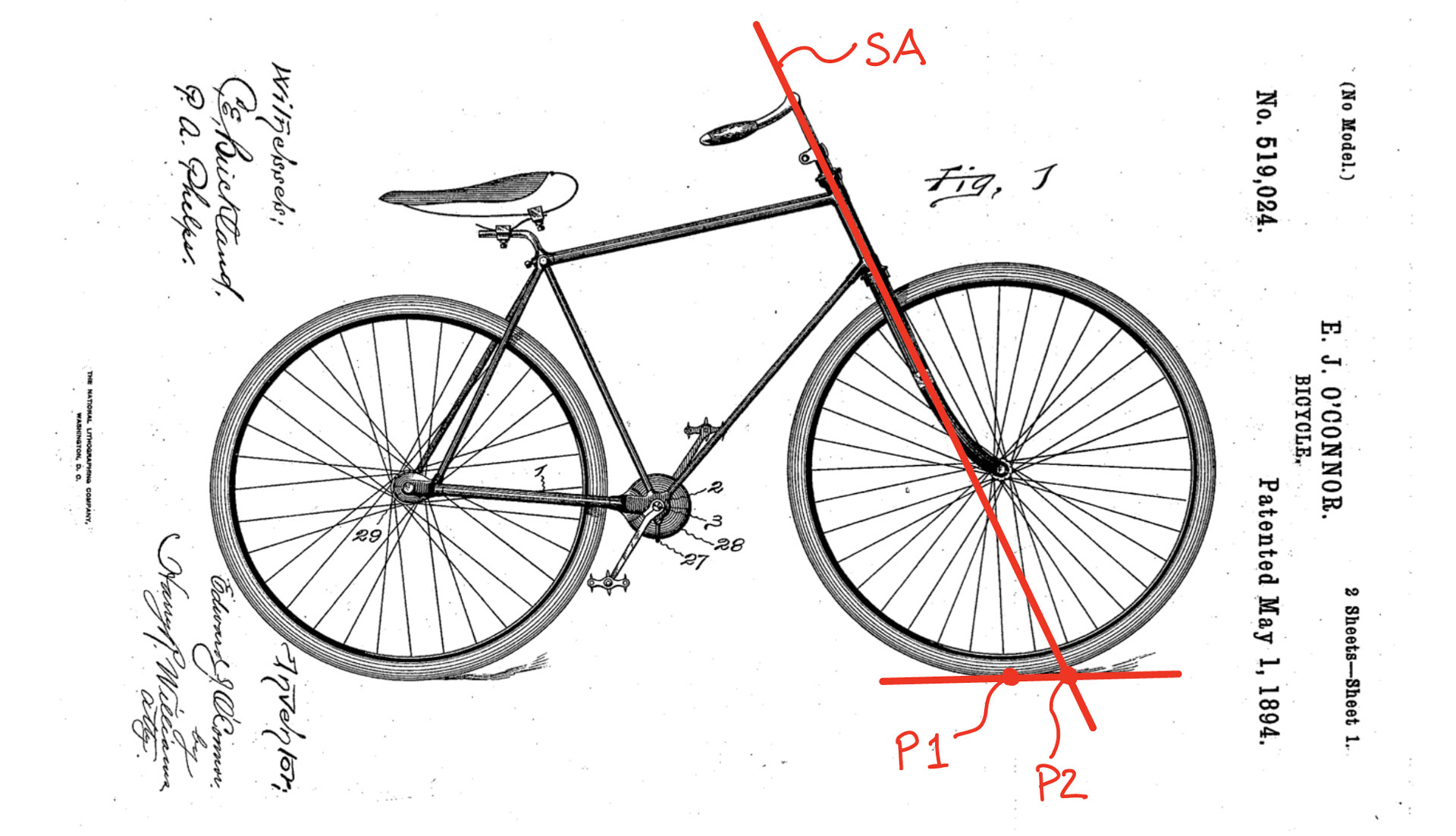
Real science
Deconstruction


Self-stability and self-steering are as easy as riding a bike: as the wheels turn, gyroscopic forces keep you upright, and as you head off in whatever direction you’re going, fork trail gives you the ability to steer.
How do bicycles work?
My six-year old daughter is relishing her new-found ability to ride a two-wheeled bicycle without training wheels. Now she wants me to tell her how bikes work and how they stay upright.
Here is my short answer (for the attention span of a six-year-old): when the wheels turn, they help you stay upright and keep you going in the direction you want to go.
Here is the slightly longer version, involving gyroscopic forces and fork trail.
If you have ever spun a top, you have already witnessed gyroscopic forces at work: this is the tendency for a spinning object to resist ‘tilting’. The spinning object will try to resist moving away from the plane in which it is spinning—which in the case of a bicycle wheel is generally upright or vertical—by exerting a reaction force in a direction opposite to the force exerted on it.
A spinning top will tend to stay upright as long as it is spinning but will fall over once it slows or stops. In the same way, a spinning bicycle wheel will try to stay vertical (keeping the bicycle, and you, upright). The bicycle is ‘self-stable’: all the time you are riding it, it will stay upright. It’s in its nature to do that.
Now let’s look at fork trail. Shopping carts employ casters, a type of wheel that is mounted on an offset pivot in such a way that the wheel automatically aligns itself with the direction of travel of the object to which it is attached. No matter which direction you move the cart, the wheel of the caster will always follow. The front wheel of your bicycle—more specifically, the combination of the front wheel and the fork, that ‘prong thing’ that holds the front wheel and turns when you turn the handlebars—operates in much the same way as the caster on a shopping cart.
A bicycle’s front wheel will tend to automatically turn when the bicycle leans sideways. This is called the caster effect, or fork trail.

It happens because the point (P1) where the wheel and the ground meet is offset from—and in the case of a bicycle is located behind—the point (P2) where the fork’s steering axis meets the ground. You can think of this steering axis as an imaginary line (SA) that extends through the head tube of the bicycle’s frame—cyclists will know what I’m talking about.
It is as though the front wheel is being towed behind the bicycle’s fork (hence, fork trail). This makes the bike self-steering: lean sideways and it wants to turn; and self-centering: keep it upright, and the bike wants to go straight. It’s easy—just like riding a bike.
James Reid is a partner and patent agent in Montréal and has a degree in mechanical engineering. First published in RE: issue 17 (2020). Illustration derives from a bicycle patent (US519024) from 1894
© Norton Rose Fulbright LLP 2025